The average growth rate across the country for the last seven days dropped to 45kg DM/ha from 57kg DM/ha the previous week.
Growth rates continue to be very variable but overall there is a rise in growth expected this week.
It has been a very difficult few weeks to manage grass quality in most parts of the country.
Low growth rates have meant pre-grazing covers have been ideal for the most part. The issue has been where grass was under stress due to lack of moisture in the soil. This caused grass to produce a stem and seed head which reduces its DMD.
Grazing these paddocks at a low pre-grazing cover will give you the best chance of correcting quality. If growth rates are recovering it may also be an option to cut the worst-affected paddocks for bales over the coming week. This will depend on growth rates being higher than demand, average farm cover being above 550kg DM/ha and C/LU being over 180kg DM/ha.
Maintaining quality
In the coming weeks, the focus will move to building grass on the farm while also maintaining quality. The main reason for this is to keep grass in the cows’ diet for as long as possible.
Your stocking rate for this period will determine what level of grass you need to build on the farm.
Caroline O’Sullivan – Teagasc Curtins Farm, Co Cork
Average farm cover is 563kg DM/ha and growth has increased to 59kg DM/ha this week from 30kg DM/ha last week. Grass quality varies across the farm as some paddocks went to stem at a very low cover. This year’s reseeded paddocks are excellent quality and cows have been grazing them at covers below 1,100kg DM/ha in order to give the clover the best chance to establish. Our low stocking rate has helped us avoid running into a deficit. We are spreading 30 units of N/acre on the grass-only swards. The grass plus clover and multispecies swards will get 25-30 units of N per acre at the end of August.
Stocking rate (cows/ha): 2.18Growth rate (Kg/day): 59Cover/Lu (kg/cow): 258Yield (L/cow/day): 16.5Fat %: 4.76Protein %: 3.65Milk solids (kg/cow): 1.43Supplement fed (kg/cow/day): 1Ben Tyrrell – Kildalkey, Co Meath
The C/LU is always on the low side here as we are stocked quite high on the milking platform. We are feeding 5kg of concentrates and 2kg DM of silage at the minute.
There are a lot of covers between 800kg DM/ha and 1,000kg DM/ha on the wedge so next week we hope to take the silage out of the diet. At the minute we are drying off the autumn herd which has dropped the demand. The autumn herd will start calving in early October and calving will last for six weeks. We took third-cut silage two weeks ago and if things get tight cows can graze this ground, otherwise we will get a fourth cut.
Stocking rate (cows/ha): 4.5Growth rate (Kg/day): 68Cover/Lu (kg/cow): 154Yield (L/cow/day): 16.85Fat %: 5.62Protein %: 4.13Milk solids (kg/cow): 1.69Supplement fed (kg/cow/day): 5Darren Healy – Redcross, Co Wicklow
Pre-grazing covers at the minute are around 1,000kg DM/ha, having been down at 700kg DM/ha a couple of weeks ago. Growth rates went as low as 30kg DM/ha and for the last 10 days we have been feeding 6kg of meal and 3kg DM of silage in order to allow grass supply to recover. We have only had 20ml of rain over the last three weeks.
We are planning to reduce supplementation but this depends on us getting the rain at the end of this week. We are on a hilly farm with an open watercourse so at the minute we are busy changing the camber of some roadways and also moving a number of water troughs.
Stocking rate (cows/ha): 2.8Growth rate (Kg/day): 62Cover/Lu (kg/cow): 181Yield (L/cow/day): 23Fat %: 4.12Protein %: 3.59Milk solids (kg/cow): 1.83Supplement fed (kg/cow/day): 6Derek O’Donoghue – Salesian Ag College, Pallaskenry
Current stock at grass include 24 spring 2020-born dairy-beef bullocks which will be finished at 24 months old and 24 heifers the same age which will be sold in-calf at the end of the year. There are 45 calves from this spring and they are currently grazing with the remaining 34 lambs to be drafted for slaughter from the 75-ewe flock.
Twenty bales of silage were made this week as well as 36 last week from paddocks that had gone too strong for grazing. This is likely to be the last surplus to be baled as we now start to build grass covers for autumn. Stocking rate is reducing with second-cut silage ground coming available for grazing.
System: Dairy calf to beef and sheep Soil type: Free-drainingFarm cover (kg DM/ha): 637Growth (kg DM/ha/day): 69Demand (kg DM/ha/day): 41Ger McSweeney – Millstreet, Co Cork
Grass growth got a real burst once the moisture arrived. The farm has escaped the heaviest of the rainfall thus far which is fine. We have still received over 30mm of rain which was welcomed.
I have skipped a few paddocks that I will bale once we get a couple of dry days together once again. There are still paddocks in the rotation that have gone to seed from the dry spell so as much as possible I will target them for cutting.
I am planning on weaning in late September so the calves will need to get their first pneumonia vaccination six weeks before that, which is next week. When I have them in I will weigh everything for the BEEP-S scheme and the calves are due a worm dose as well.
System: Suckler to beefSoil type: VariableFarm cover (kg DM/ha): 531 Growth (kg DM/ha/day): 61 Demand (kg DM/ha/day): 31Declan Marren – THRIVE demonstration farm, Cashel, Co Tipperary
All yearling stock were weighed last week and divided into groups for finishing. The bullocks averaged 529kg while the heifers were 476kg. Bullocks over 500kg and heifers over 470kg were drafted into groups for meal feeding at grass.
Grass quality is very good at the moment. Stock are entering lower covers due to reduced grass growth over the last few weeks. Heifers will be built up to 3kg/day while the bullocks will get 4kg/day of a four-way mix finishing ration. Looking at the heifers there will be a draft fit for slaughter in around a fortnight’s time.
This year’s calves received a worm dose and were split into bulls and heifers. The male calves were castrated on Thursday.
System: Dairy calf to beefSoil type: Mostly dryFarm cover (kg DM/ha): 878 Growth (kg DM/ha/day): 31Demand (kg DM/ha/day): 38
The average growth rate across the country for the last seven days dropped to 45kg DM/ha from 57kg DM/ha the previous week.
Growth rates continue to be very variable but overall there is a rise in growth expected this week.
It has been a very difficult few weeks to manage grass quality in most parts of the country.
Low growth rates have meant pre-grazing covers have been ideal for the most part. The issue has been where grass was under stress due to lack of moisture in the soil. This caused grass to produce a stem and seed head which reduces its DMD.
Grazing these paddocks at a low pre-grazing cover will give you the best chance of correcting quality. If growth rates are recovering it may also be an option to cut the worst-affected paddocks for bales over the coming week. This will depend on growth rates being higher than demand, average farm cover being above 550kg DM/ha and C/LU being over 180kg DM/ha.
Maintaining quality
In the coming weeks, the focus will move to building grass on the farm while also maintaining quality. The main reason for this is to keep grass in the cows’ diet for as long as possible.
Your stocking rate for this period will determine what level of grass you need to build on the farm.
Caroline O’Sullivan – Teagasc Curtins Farm, Co Cork
Average farm cover is 563kg DM/ha and growth has increased to 59kg DM/ha this week from 30kg DM/ha last week. Grass quality varies across the farm as some paddocks went to stem at a very low cover. This year’s reseeded paddocks are excellent quality and cows have been grazing them at covers below 1,100kg DM/ha in order to give the clover the best chance to establish. Our low stocking rate has helped us avoid running into a deficit. We are spreading 30 units of N/acre on the grass-only swards. The grass plus clover and multispecies swards will get 25-30 units of N per acre at the end of August.
Stocking rate (cows/ha): 2.18Growth rate (Kg/day): 59Cover/Lu (kg/cow): 258Yield (L/cow/day): 16.5Fat %: 4.76Protein %: 3.65Milk solids (kg/cow): 1.43Supplement fed (kg/cow/day): 1Ben Tyrrell – Kildalkey, Co Meath
The C/LU is always on the low side here as we are stocked quite high on the milking platform. We are feeding 5kg of concentrates and 2kg DM of silage at the minute.
There are a lot of covers between 800kg DM/ha and 1,000kg DM/ha on the wedge so next week we hope to take the silage out of the diet. At the minute we are drying off the autumn herd which has dropped the demand. The autumn herd will start calving in early October and calving will last for six weeks. We took third-cut silage two weeks ago and if things get tight cows can graze this ground, otherwise we will get a fourth cut.
Stocking rate (cows/ha): 4.5Growth rate (Kg/day): 68Cover/Lu (kg/cow): 154Yield (L/cow/day): 16.85Fat %: 5.62Protein %: 4.13Milk solids (kg/cow): 1.69Supplement fed (kg/cow/day): 5Darren Healy – Redcross, Co Wicklow
Pre-grazing covers at the minute are around 1,000kg DM/ha, having been down at 700kg DM/ha a couple of weeks ago. Growth rates went as low as 30kg DM/ha and for the last 10 days we have been feeding 6kg of meal and 3kg DM of silage in order to allow grass supply to recover. We have only had 20ml of rain over the last three weeks.
We are planning to reduce supplementation but this depends on us getting the rain at the end of this week. We are on a hilly farm with an open watercourse so at the minute we are busy changing the camber of some roadways and also moving a number of water troughs.
Stocking rate (cows/ha): 2.8Growth rate (Kg/day): 62Cover/Lu (kg/cow): 181Yield (L/cow/day): 23Fat %: 4.12Protein %: 3.59Milk solids (kg/cow): 1.83Supplement fed (kg/cow/day): 6Derek O’Donoghue – Salesian Ag College, Pallaskenry
Current stock at grass include 24 spring 2020-born dairy-beef bullocks which will be finished at 24 months old and 24 heifers the same age which will be sold in-calf at the end of the year. There are 45 calves from this spring and they are currently grazing with the remaining 34 lambs to be drafted for slaughter from the 75-ewe flock.
Twenty bales of silage were made this week as well as 36 last week from paddocks that had gone too strong for grazing. This is likely to be the last surplus to be baled as we now start to build grass covers for autumn. Stocking rate is reducing with second-cut silage ground coming available for grazing.
System: Dairy calf to beef and sheep Soil type: Free-drainingFarm cover (kg DM/ha): 637Growth (kg DM/ha/day): 69Demand (kg DM/ha/day): 41Ger McSweeney – Millstreet, Co Cork
Grass growth got a real burst once the moisture arrived. The farm has escaped the heaviest of the rainfall thus far which is fine. We have still received over 30mm of rain which was welcomed.
I have skipped a few paddocks that I will bale once we get a couple of dry days together once again. There are still paddocks in the rotation that have gone to seed from the dry spell so as much as possible I will target them for cutting.
I am planning on weaning in late September so the calves will need to get their first pneumonia vaccination six weeks before that, which is next week. When I have them in I will weigh everything for the BEEP-S scheme and the calves are due a worm dose as well.
System: Suckler to beefSoil type: VariableFarm cover (kg DM/ha): 531 Growth (kg DM/ha/day): 61 Demand (kg DM/ha/day): 31Declan Marren – THRIVE demonstration farm, Cashel, Co Tipperary
All yearling stock were weighed last week and divided into groups for finishing. The bullocks averaged 529kg while the heifers were 476kg. Bullocks over 500kg and heifers over 470kg were drafted into groups for meal feeding at grass.
Grass quality is very good at the moment. Stock are entering lower covers due to reduced grass growth over the last few weeks. Heifers will be built up to 3kg/day while the bullocks will get 4kg/day of a four-way mix finishing ration. Looking at the heifers there will be a draft fit for slaughter in around a fortnight’s time.
This year’s calves received a worm dose and were split into bulls and heifers. The male calves were castrated on Thursday.
System: Dairy calf to beefSoil type: Mostly dryFarm cover (kg DM/ha): 878 Growth (kg DM/ha/day): 31Demand (kg DM/ha/day): 38 


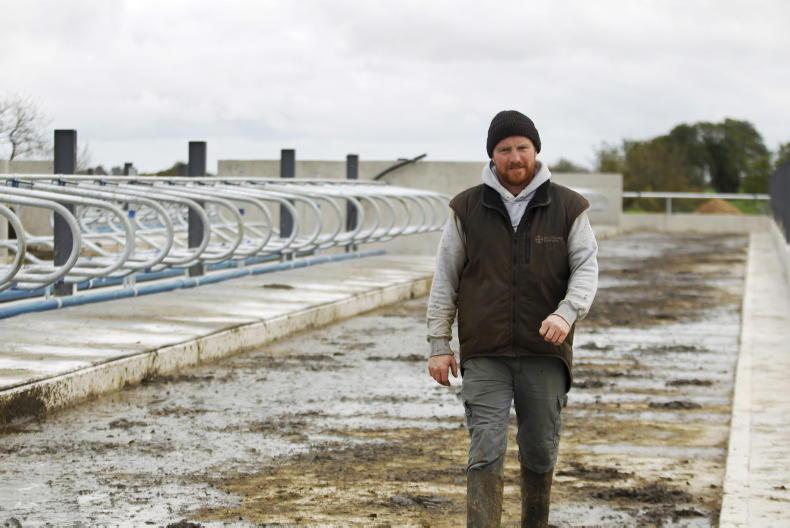

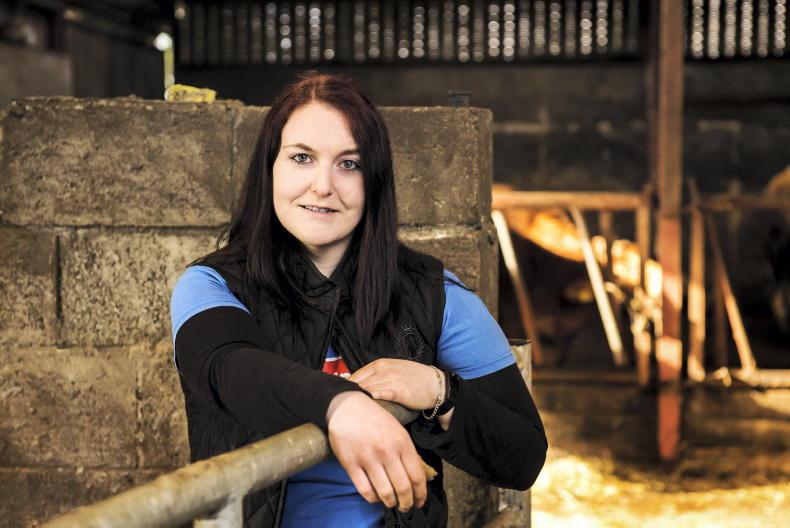

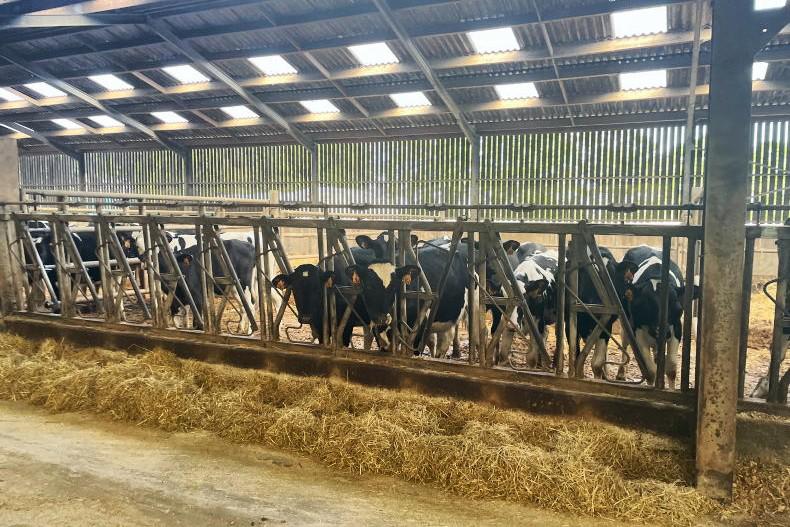
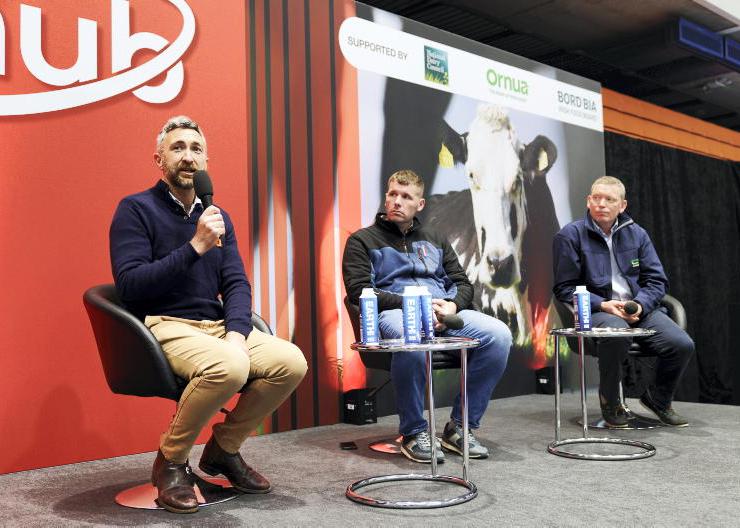
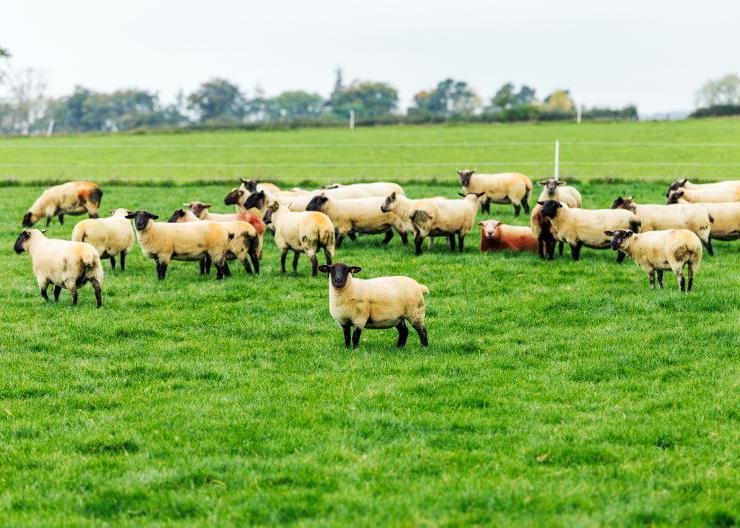
SHARING OPTIONS